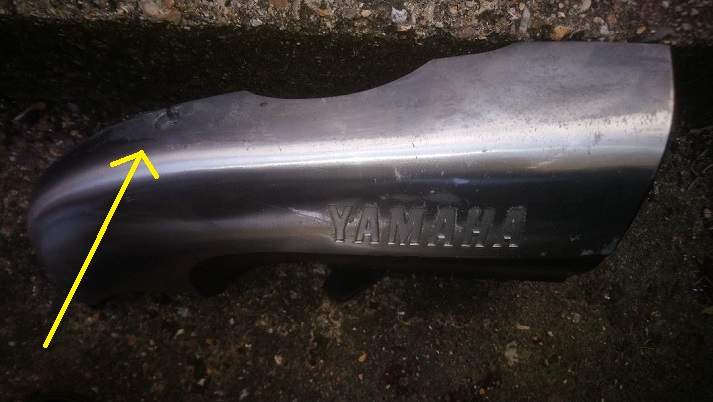Since my newly acquired Vmax is 22 years, not surprisingly there is a bit of corrosion on the alloy parts.
I'll list the areas that could do with tidying up. What is the best way for the following:
1. air scoops (incidentally the left one is blanked off - looks factory fitted so is just for show?) The upper half on the RH one the top looks to be bare alloy. Are these anodised as the top is a different colour to the side part, arrow points to where the wear line is.
2. round carb covers
3. engine (does the cylinder head with the valve gear have a rougher casting compared with the barrel? I ask as the black paint on the two is different, the paint on the barrel being much smoother). Sand down the shiny alloy flat surfaces and leave or paint with heat resistant lacquer?
4. the exhaust covers - as above?

I'll list the areas that could do with tidying up. What is the best way for the following:
1. air scoops (incidentally the left one is blanked off - looks factory fitted so is just for show?) The upper half on the RH one the top looks to be bare alloy. Are these anodised as the top is a different colour to the side part, arrow points to where the wear line is.
2. round carb covers
3. engine (does the cylinder head with the valve gear have a rougher casting compared with the barrel? I ask as the black paint on the two is different, the paint on the barrel being much smoother). Sand down the shiny alloy flat surfaces and leave or paint with heat resistant lacquer?
4. the exhaust covers - as above?





